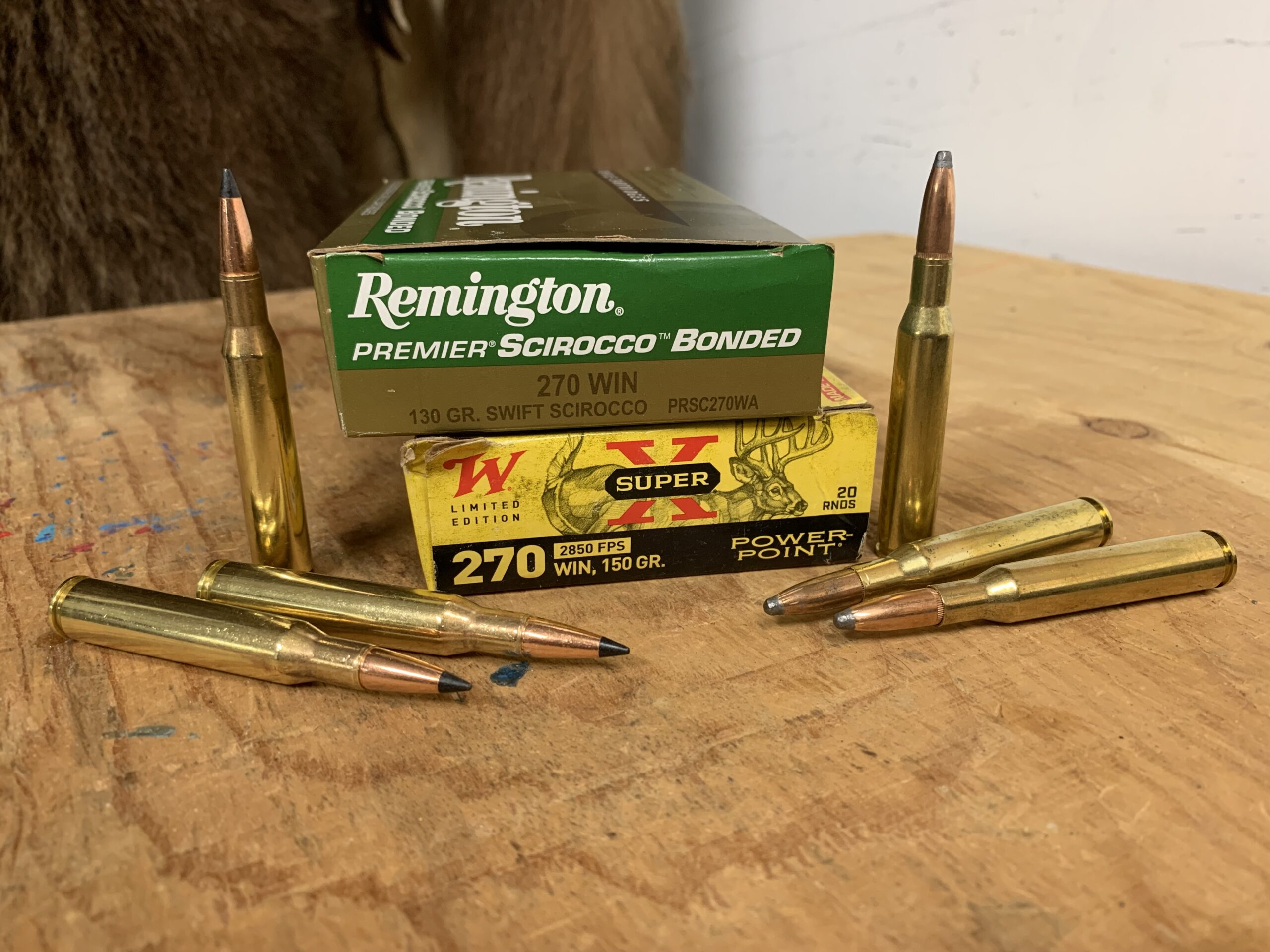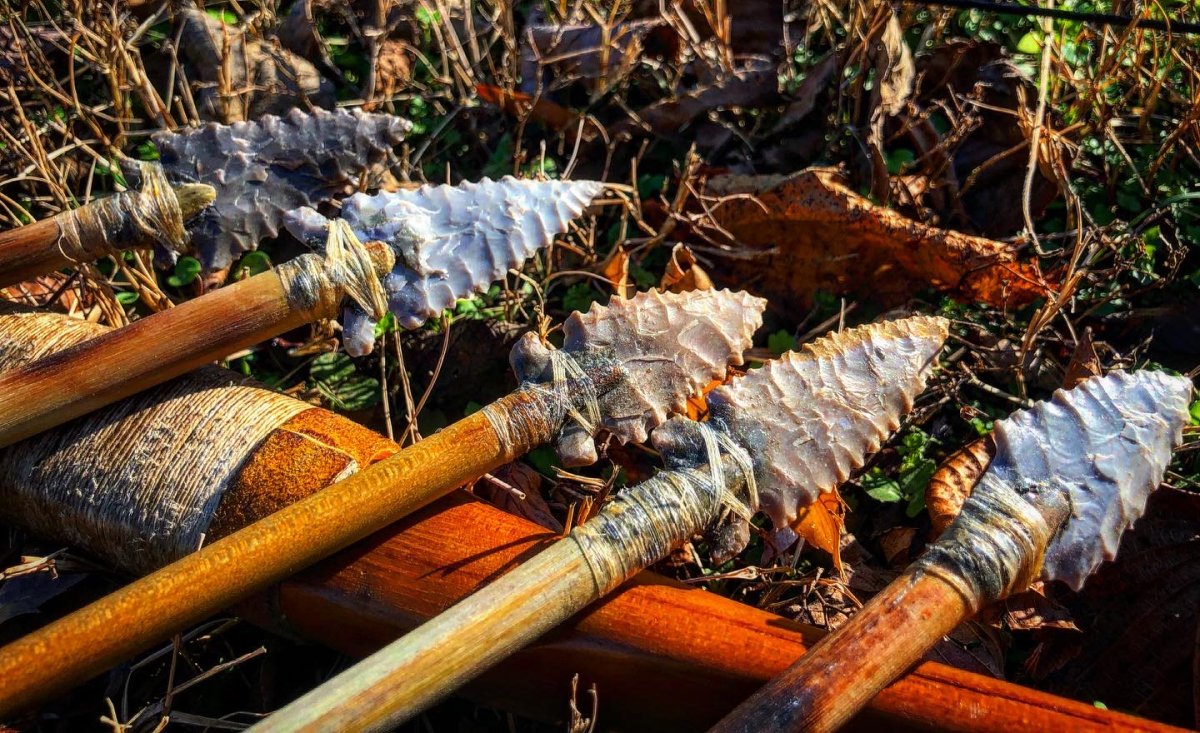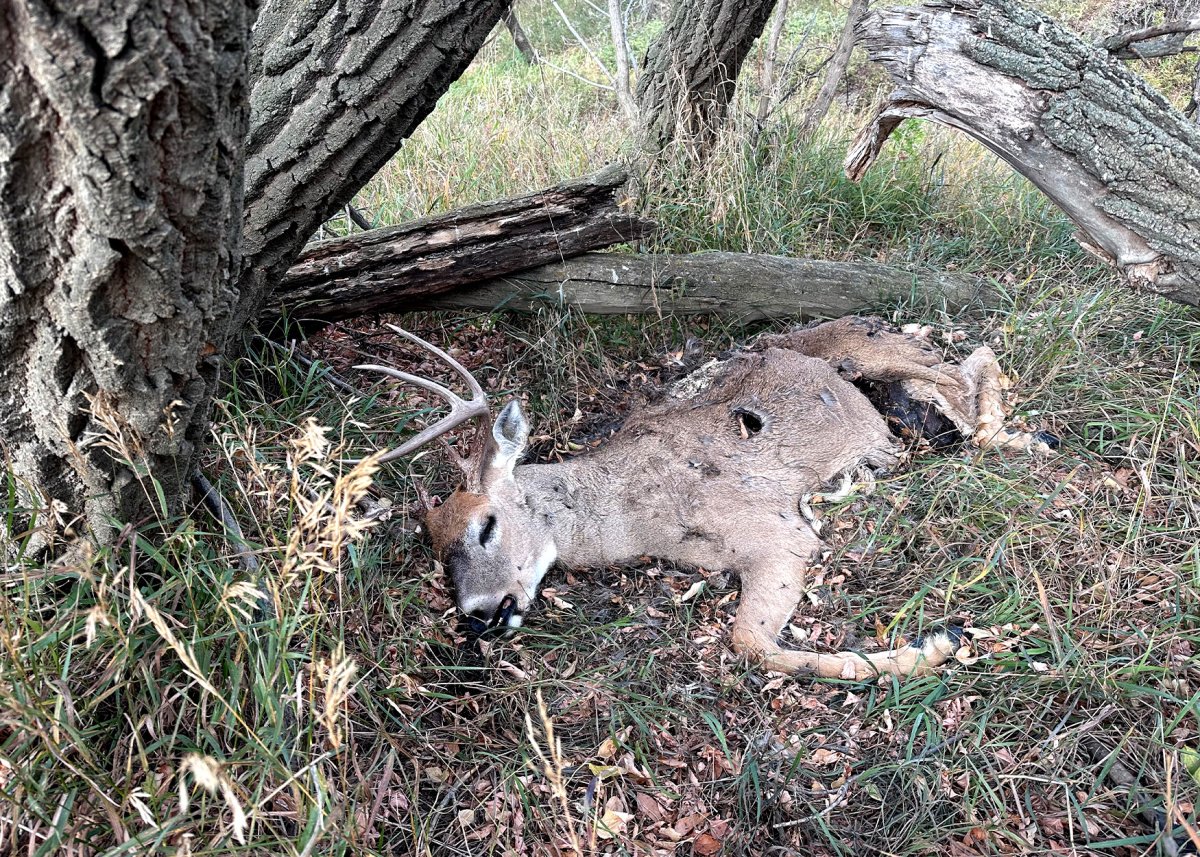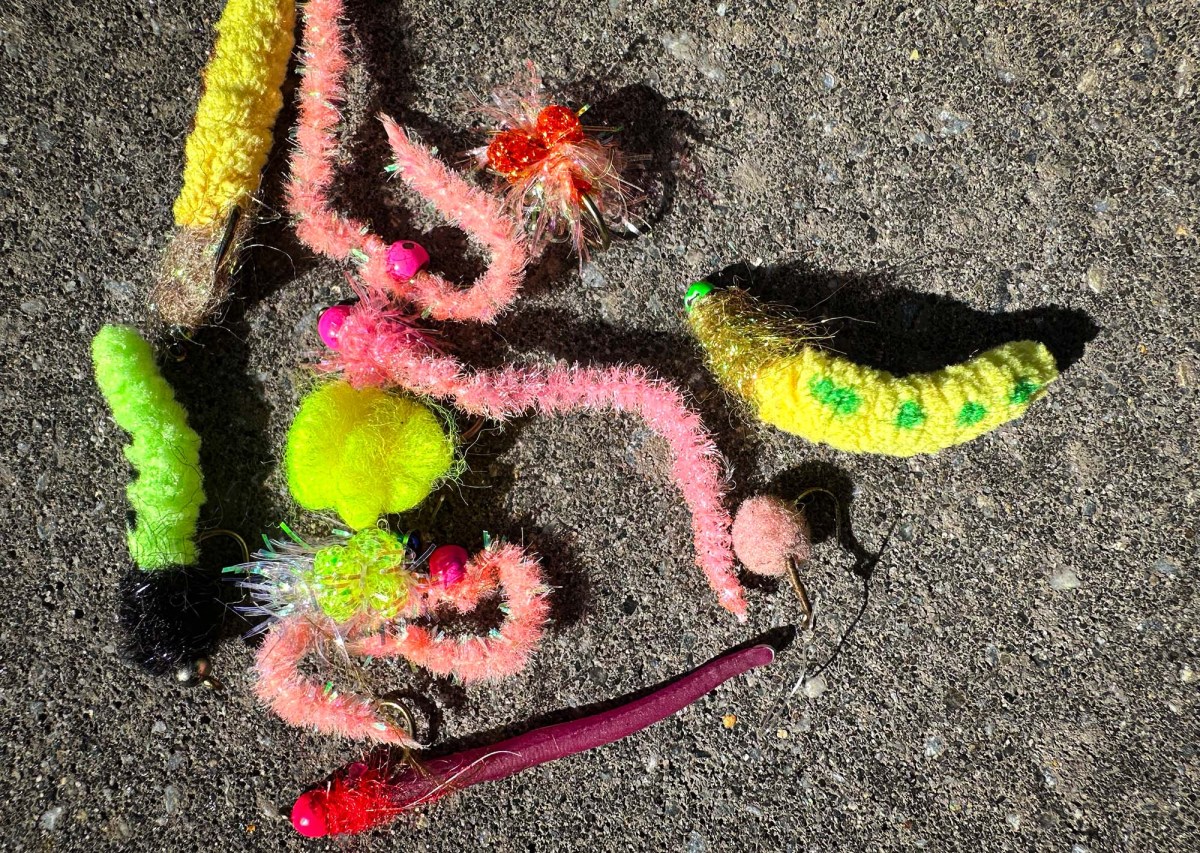Jack O’Connor on the .270 Winchester vs .30-06 Springfield

The old buck walked slowly around the point, stopped, reached up for a mouthful of browse. The gold bead came to rest against his graybrown hide, almost covering him. Then the rifle cracked and the buck dropped, killed instantly, his mouth still full of juniper.
That sounds like the end of a hunting yarn, instead of the beginning of a piece on rifles. I brought that up simply because that big buck was the first deer I, shooting a .270, ever connected with, and because he was one of the first deer killed with its wicked 130- grain bullet. The rifle was one of the first Winchester Model 54’s ever made, with a serial number well below 1,000.
From that one shot I suspected several virtues in this brand-new cartridge. In the first place, I had thought that buck to be around 200 yards away, and I had held dead on. However, he had been more than 300 paces away, and the bullet had landed about two feet to the right and some six inches below where I had wanted it to. Nevertheless the deer couldn’t have hit the ground any quicker if his neck had been broken.
Then and there, I realized that the .270 packed more soup out at long game ranges than any rifle I’d ever shot, that it had enough stuff in flat trajectory and shocking power to make up for the sour holding that is inevitable in big-game hunting, and that Winchester’s pointed-expanding bullet was exceedingly well designed to open up on game, as well as to retain velocity through its excellent spitzer point and good sectional density. Yes, it was good!
At the time it was released in 1925, the .270 had been under development for several years, the brain child of the late T. C. Johnson of Winchester. The case is that of the .30/06 necked down to .277, one of the first and one of the most successful of all the experiments which have produced the .250/3,000, the .256 Newton, the .35 and .400 Whelen, and others. In working up the cartridge, various bullet weights were tried, but with powders then available the 130-grain gave the best results.
So there it was —— this new, semi-wildcat cartridge, the first important metallic cartridge development to be hatched since the World War. It fired a long, well-shaped, highly efficient spitzer bullet at the then tremendous velocity of 3,160 feet a second.
Yet in spite of all its virtues, it didn’t catch on any too quickly. For one thing the .30/06 was then getting a tremendous amount of publicity, and hundreds of thousands of Americans of hunting age had become familiar with that cartridge and the bolt action during the war. For another, Uncle Sam was practically giving away millions of rounds of ammunition left over from the brawl of 1917-18 in France. For a couple of dollars, a man could shoot to his heart’s content with a .30/06, but with .270 hulls retailing for a dime each he had to husband them.
Then, too, certain gun writers let it be known that the .270 wasn’t in the same class with the .30/06 as to accuracy. That used to puzzle me. My first .270 would deliver, with a Lyman 48 sight and blackened front bead, groups of from 3 ½ to 5 inches all day long, from 200 yards prone with a sandbag rest. That was just about what I could do with the Springfield I had at the time.
However, the original gang of high velocity nuts that bought and used the .270 have so sung its praises that the newer cartridge has begun to muscle into the preserve of its great big brother. So how should the man willing to lay down a wad of folding money and considering the two calibers decide between them? Let’s look them over.
The 130-grain .270 bullet leaves the muzzle at 3,160, whereas the equivalent 150-grain .30/06 bullet begins its journey at 3,000, 160 feet a second slower. At 100 yards the .270 is going at the rate of 2,970 and the .30/06 at 2,760. In that short stretch the .270 has gained 50 feet a second. At 200 the velocity of the .270 is 2,790 and of the .30/06 2,500. At 300 yards the .270 is still stepping along at 2,610, whereas the .30/06 has fallen off to 2,175. The .270 is now 445 feet a second ahead and is whipping along way out there at good long game range, not much slower than the much used 180-grain .30/06 bullet at the muzzle) and at about the muzzle velocity of the 150 grain .300 Savage bullet. At 300 yards, then, the .270 has ample velocity to give game a paralyzing knockdown blow with even a poorly placed shot, whereas the good .30/06 has lost a lot of stuff, and, at that range, has only about the soup of a .30/30 at 50 yards.
Out at 400, the .270 is still traveling at 2,360 and packs more power than a .25/35 does at the muzzle. Even at 500 yards it still has a slight edge on the .25/35 at the muzzle, and many consider the .25/35 an adequate medium-range deer cartridge. By that time the 150-grain .30/06 bullet is hitting a blow about like that of a .32/20 high velocity.
Another little factor to consider is the ease of hitting running game. The faster a bullet moves, the less need game be led, and the less the lead the easier it is to connect. Again, that .270 will turn a fair shot into a good one.
Once upon a time, the .270 was criticized because the cartridge was loaded only with 130-grain bullets — Winchester’s pointed-expanding, Remington’s open-point, Western’s open-point-boattail. Today, however, a 150-grain softpoint bullet at 2,770 feet a second is available from Remington, Winchester, and Western, and each firm furnishes a 100-grain sharp-point at 3,540. In addition, the handloader can obtain 120-grain spitzers that can be given a velocity of 3,250, and a 140-grain bullet that will travel along at about 2,900.
Read Next: Jack O’Connor’s Final Word on How to Pick a Deer Rifle
However, the heavier bullets have struck me as gilding the lily. The man who uses the 150-grain soft-point in the .270 is tossing most of that cartridge’s virtues out of the window. Buying a .270 and then using the 150- grain fodder in it is like getting a 100-mile-an-hour automobile and then putting a governor on it so it can’t go more than 45.
However, that new 100-grain bullet has something. It has reduced the 300-yard trajectory curve of the .270 from 5 to 4.5 inches; not much, but every bit counts with the vermin shot. It kills coyotes and jack rabbits like dynamite even at 400 yards, when you can hit them, and it will also polish off a deer in spectacular fashion. With it the .270 is one of the best vermin calibers made.
What about its accuracy? Over the years it has acquired a reputation as being exceedingly accurate. My present .270 is the most accurate rifle I have ever had my hands on. It has shot enough 2 ½-inch groups at 200 yards to make me suspect that it would shoot inside two inches every time if I could hold that well, and had a ‘scope of higher power on it instead of the 2 ½ X hunting ‘scope with which it is mounted. I have never owned a .30/06 I could shoot as well.
That .270 also has the commendable little habit of putting bullets of different weights into the same group at 200 yards. For practical deer hunting, a man could feed anything made for it into the chamber and never tell the difference at medium range. Other .270 owners tell me they have had the same results. For comparison, my fine .30/06 puts the 220-grain bullets eighteen inches below and six inches to the left of where it groups the 150-grain bullets at 200 yards.
So far, all to the good. Aren’t there any flies on the .270 at all? Well, for one thing, the .270 isn’t so good an all-around cartridge as the .30/06, and the man who wants to hunt elk, moose, and big bear, as well as animals the size of deer, had better lay off it. Lots of moose have been killed with the .270, but from my own experience with larger game, I’d want to pack a rifle throwing more lead.
For another, .270 ammunition, even after fifteen years, is not so well distributed as that of the .30/06, and the man who wants to be able to rush into any crossroads hardware store and grab a box of hulls, had better think twice before he gets a .270.
But for ordinary deer hunting, vermin shooting, long-range work in open country on sheep, antelope, and Western deer, for instance, the .270 is tops. It’s better killing power at long range, its flatter trajectory, its somewhat better accuracy with factory rifles and factory ammunition, and its lighter recoil give it a decided edge over the .30/06 for the ordinary hunter who aspires to nothing larger than mule deer. And now that Uncle Sam has quit giving away .30/06 ammunition at a third of the price of commercial stuff, the stock of the .270 ought to hit a record high.
Editor’s Note: This column was written more than 70 years ago and adhered to the standards at the time. Today, you can find modern .30/06 ammo (and .270 ammo) with higher velocities and flatter trajectories. Also, today we know that “knockdown power” is a myth, true accuracy data requires a larger sample size, and terminal ballistics are quite complex.
Read the full article here









